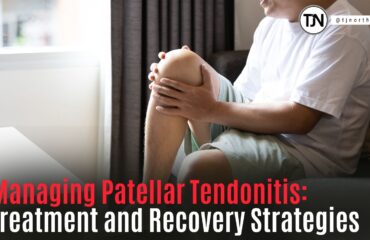Growing young athletes are no strangers to injuries, and it is not uncommon for them to complain about knee pain. One condition that may be the culprit is Osgood-Schlatter disease. This inflammatory condition affects the growth plate at the top of the shin, where the patellar tendon attaches to the tibia.
Understanding Osgood-Schlatter Disease
Osgood-Schlatter disease manifests as pain and swelling below the knee joint, specifically at the tibial tuberosity, where the patellar tendon (that is, the tendon that connects to the patella, or knee cap) is attached to the shinbone. This condition is most commonly found in young athletes engaged in sports that involve frequent jumping and running. The primary cause of Osgood-Schlatter disease is irritation of the growth plate, a soft cartilaginous tissue, due to the constant pulling of the patellar tendon during activities that stress the knee.
To diagnose Osgood-Schlatter disease, doctors may perform a physical examination, assess the patient’s medical history, and consider imaging studies such as X-rays. X-rays can help identify the location of the growth plates and reveal any inflammation or swelling in the affected area.
Treatment Options
The good news for young athletes suffering from Osgood-Schlatter disease is that it often resolves itself once the individual completes their growth spurt. However, there are several ways to manage symptoms and expedite the healing process.
- Rest and Limitation of Activities: The primary recommended treatment is to limit sports activities that require running, jumping, or deep knee-bending until tenderness and swelling subside. This allows the affected area to heal without additional stress.
- Protective Measures: Athletes can use knee pads to prevent direct contact between the knee, playing surfaces, or other players. Additionally, wearing a patellar tendon strap below the kneecap may help reduce tension on the tibial tubercle.
- Ice Therapy: Applying ice packs after physical activity can help alleviate pain and reduce swelling. Apply ice to the swelled area for 20 to 30 minutes, two to three times a day, as needed.
- Stretching Exercises: Doctors may recommend stretching exercises to enhance flexibility, either at home or through formal physical therapy.
- Medication: When needed, over-the-counter pain relievers or nonsteroidal anti-inflammatory drugs (NSAIDs) like ibuprofen or acetaminophen can be used to control pain. However, if the pain persists and affects daily activities, a discussion with the doctor about taking a break from sports activity may be necessary.
See an Orthopedic Doctor for an Accurate Assessment of Knee Pain
Osgood-Schlatter disease is a temporary condition that primarily affects athletes when they are young and experiencing periods of rapid growth. While it can be a painful and challenging experience, proper management and care can significantly improve outcomes, and, in most cases, it will resolve itself on its own with good care. If you or your child is experiencing knee pain or swelling, it’s essential to consult with a qualified orthopedic professional.
At Tchejeyan Orthopaedics and Sports Medicine in Thousand Oaks, California, we specialize in diagnosing and treating a variety of knee issues, including Osgood-Schlatter disease. Dr. T is an experienced orthopedic surgeon, and our dedicated team is here to provide personalized care. Don’t let knee pain hinder your athletic journey – schedule an appointment at TJN Ortho today to ensure a healthy and active future.




